Several Black Catholics from the United States who are on the road to sainthood serve as models of resilience and hope, despite the stony road they’ve traveled along the way.
Julia Greeley. Mother Mary Elizabeth Lange. Pierre Toussaint. Father Augustus Tolton. Henriette Delille. Sister Thea Bowman. While their lives have gone on different paths, they encountered many of the same obstacles because of the racialization of America over time.
In honor of Black Catholic History Month in November, their stories were highlighted in an online presentation Nov. 15, hosted by the Mercy Retreat and Conference Center, with presenters Joyce Jones, program director for racial harmony of the archdiocese, and Jeff Schulenberg, of the Peace and Justice Commission with Sacred Heart Parish in Valley Park.
The roots of Black Christianity stem from Africa, and not in places such as Europe or the United States, Jones noted, citing examples of Black saints and several African popes, including St. Victor I, pope and martyr; and Pope Gelasius I.
By the 19th century in the United States though, the racialization of society was in full force. It was a time in which there were few white Americans who thought Blacks were equal to them, Jones noted. With this landscape in mind, there are stories of numerous Black Catholics — now on the path to sainthood — who walked a difficult road, yet remained loyal to their Church.
Jones told the story of Harriet Thompson, an African-American resident of New York City, who wrote to Pope Pius IX in 1853, asking him to “provide salvation for the Black race, who had gone astray because of neglect,” she said. “Here was an example of Black lay Catholics who spoke out for themselves expressing their love and loyalty to the Church, but also the racist practices within the Church.”
Servant of God Sister Thea Bowman
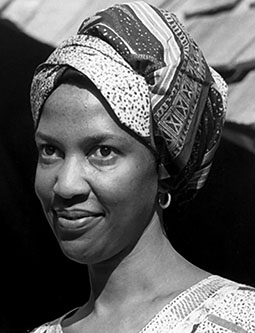 Sister Thea Bowman
Sister Thea BowmanSister Thea Bowman was born in 1937 as Bertha Elizabeth Bowman, an only child to middle-aged parents, in Canton, Mississippi. She was raised Methodist but converted to Catholicism, inspired by the Franciscan Sisters of Perpetual Adoration and the Missionary Servants of the Most Holy Trinity who were her teachers and pastors at Holy Child Jesus Church and School in Canton. These communities nurtured her religious vocation.
As a child, she learned from the elders of her community, especially on issues such as racism, segregation, inequality and the struggle for Civil Rights in Mississippi. She was quite aware that God loved and provided for the poor and the oppressed. At 15, she joined the Franciscan Sisters of Perpetual Adoration and went to La Crosse, Wisconsin, where she would become the only African-American member of her religious community.
In the 1960s, during the height of the Civil Rights movement, Sister Thea became known as an evangelizer, teacher, writer and singer sharing the joy of the Gospel through the lens of her African-American heritage. In 1978, she returned to Mississippi to care for her ailing parents, where she served as director of the Office of Intercultural Affairs for the Diocese of Jackson. She also was a founding faculty member of the Institute for Black Catholic Studies at Xavier University in New Orleans. She died of cancer in 1990. Her cause for canonization was advanced in 2018, earning her the title Servant of God. To learn more about Sister Thea Bowman, see www.sistertheabowman.com.
Venerable Henriette Delille
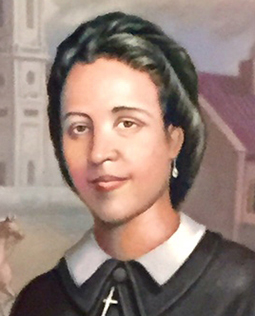 Henriette Delille
Henriette DelilleHenriette Delille was born in 1812 in New Orleans as a Creole, and free woman of mixed race. Her mother was born a free woman of color in New Orleans. Her father was French. At 24 years old, Henriette experienced a religious conversion, saying, “I believe in God. I hope in God. I love. I want to live and die for God.”
In 1836, she founded the Society of the Holy Family (originally known as Sisters of the Presentation), responding to the need for treatment of the people who were enslaved, elderly and sick, and providing care and education for the poor. The community became the second Black religious order in the United States. The sisters cared for people during the yellow fever epidemics in New Orleans in 1853 and 1897. They also operated parochial schools in the New Orleans area.
Henriette died in 1862, and her cause for canonization was opened in 1988. Pope Benedict XVI approved her heroic virtues and gave her the title venerable in 2010. Father Cyprian Davis published a biography on her in 2004. Read more about her life at www.henriettedelille.com.
Servant of God Julia Greeley
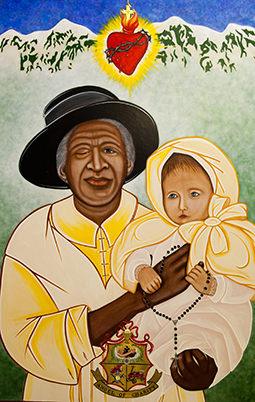 Julia Greeley
Julia GreeleyA former slave known as Denver’s “Angel of Charity,” Julia Greeley was born into slavery in Hannibal, Missouri, sometime between 1833-1848. When she was a child, a cruel slavemaster, in the course of beating Julia’s mother, caught Julia’s right eye with his whip and destroyed it.
Freed by Missouri’s Emancipation Act in 1865, Julia subsequently earned her keep by serving white families in Missouri (including St. Louis), Colorado, Wyoming and New Mexico — though mostly in the Denver area. Whatever she did not need for herself, Julia spent assisting poor families in her neighborhood. When her own resources were inadequate, she begged for food, fuel and clothing for the needy. One writer later called her a “one-person St. Vincent de Paul Society.” To avoid embarrassing the people she helped, Julia did most of her charitable work under cover of night through dark alleys.
Julia entered the Catholic Church at Sacred Heart Parish in Denver in 1880, and was an outstanding supporter of all that the parish had to offer. She became a member of the Secular Franciscan Order in 1901 and was active until her death in 1918. Her cause for canonization was opened in 2016 and she was given the title, Servant of God.
To learn more about her life and cause for canonization, see juliagreeley.org.
Servant of God Mother Mary Elizabeth Lange
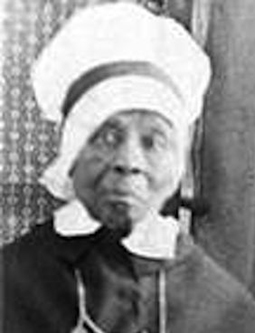 Mother Mary Lange
Mother Mary LangeBorn Elizabeth Lange around 1794 in Santiago de Cuba, she lived in a primarily French-speaking community. She received a good education and in the 1800s, she left Cuba and settled in Baltimore. There was no free public education for African-American children in Maryland until 1866, so she responded to the need by opening a school in her home in the Fells Point area of the city for the children.
She worked with several others to found the Oblate Sisters of Providence, a religious congregation for the education of African-American girls. In 1829, Elizabeth and three other women professed their first vows. The community became the first congregation of African-American women religious in the United States. Her community sought to evangelize the Black community. They also ministered to cholera patients. She died in 1882 in Baltimore.
In 2004, her cause for canonization was opened, giving her the title Servant of God. Read more about her at www.oblatesisters.com/founders.
Venerable Father Augustus Tolton
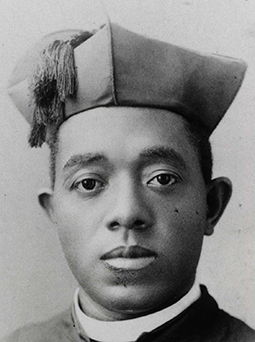 Augustus Tolton
Augustus ToltonFather Tolton was born in 1854 in Brush Creek, Missouri, near Hannibal. It was part of what was then the Diocese of St. Louis, and is now in the Diocese of Jefferson City. His parents were slaves who lived on adjoining farms owned by Catholic families. Father Tolton was baptized Catholic at St. Peter Church in Brush Creek. His father joined the Union Army when the Civil War broke out. His mother took her three children across the Mississippi River to Quincy, Illinois, a free state where she was assisted by those sympathetic toward runaway slaves.
An Irish priest, Father Peter McGirr, recognized the talent of Augustus, who attended Mass when possible. He invited him to attend the parish school taught by the School Sisters of Notre Dame. Franciscan priests and diocesan priests helped tutor him when he expressed an interest in the priesthood. But no seminary or religious order in the country would accept a Black candidate at that time. He was admitted in 1880 to the College of the Propagation of the Faith, a mission seminary in Rome, and was ordained there at the Basilica of St. John Lateran in 1886.
To his surprise, he was assigned to his home diocese. He became pastor of St. Joseph Parish in Quincy and later established St. Monica Church in Chicago. Despite rampant racism and discrimination, he became one of the city’s most popular pastors, attracting members of both white and Black Catholic communities. On July 9, 1897, he died of heatstroke on a Chicago street at the age of 43.
His cause for canonization was opened in 2010, and in 2019, his case advanced, with Pope Francis declaring him Venerable. To learn more about Father Augustus Tolton’s life and cause for canonization, see tolton.archchicago.org.
Venerable Pierre Toussaint
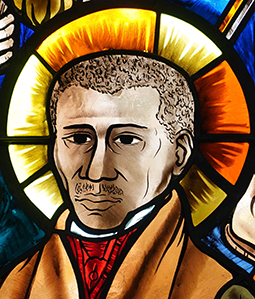 Pierre Toussaint
Pierre ToussaintPierre Toussaint was born in Haiti and brought to New York City as a slave, where he died a free man. Pierre’s master allowed Pierre’s grandmother to teach him how to read and write. Because of political unrest at home, he and several other family members were allowed to go with their master’s son to New York. There, he was apprenticed to a local hairdresser. He learned the trade and began working in the homes of rich women in New York City.
Eventually he gained his freedom and he married. Within the Catholic community, he was known as a devout and charitable person, assisting Blacks and whites in need. He and his wife opened their home to orphans and educated them. The couple also nursed abandoned people who had yellow fever. He died in 1853.
In 1991, his cause for canonization was opened, and in 1997, Pope John Paul II declared him as Venerable. Read more about his life here: bit.ly/36QDjqF.